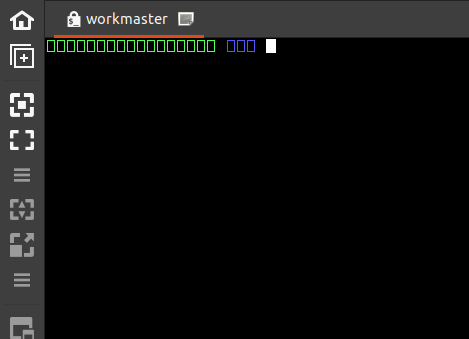unzip oracle-xe-11.2.0-1.0.x86_64.rpm.zip
Install required packages using the command:
sudo apt-get install alien libaio1 unixodbc
Enter into the Disk1 folder using command:
cd Disk1/
Convert RPM package format to DEB package format (that is used by Ubuntu) using the command:
sudo alien --scripts -d oracle-xe-11.2.0-1.0.x86_64.rpm
Create the required chkconfig script using the command:
sudo pico /sbin/chkconfig
The pico text editor is started and the commands are shown at the bottom of the screen. Now copy and paste the following into the file and save:
#!/bin/bash
# Oracle 11gR2 XE installer chkconfig hack for Ubuntu
file=/etc/init.d/oracle-xe
if [[ ! `tail -n1 $file | grep INIT` ]]; then
echo >> $file
echo '### BEGIN INIT INFO' >> $file
echo '# Provides: OracleXE' >> $file
echo '# Required-Start: $remote_fs $syslog' >> $file
echo '# Required-Stop: $remote_fs $syslog' >> $file
echo '# Default-Start: 2 3 4 5' >> $file
echo '# Default-Stop: 0 1 6' >> $file
echo '# Short-Description: Oracle 11g Express Edition' >> $file
echo '### END INIT INFO' >> $file
fi
update-rc.d oracle-xe defaults 80 01
Change the permission of the chkconfig file using the command:
sudo chmod 755 /sbin/chkconfig
Set kernel parameters. Oracle 11gR2 XE requires additional kernel parameters which you need to set using the command:
sudo pico /etc/sysctl.d/60-oracle.conf
Copy the following into the file and save:
# Oracle 11g XE kernel parameters
fs.file-max=6815744
net.ipv4.ip_local_port_range=9000 65000
kernel.sem=250 32000 100 128
kernel.shmmax=536870912
Verify the change using the command:
sudo cat /etc/sysctl.d/60-oracle.conf
You should see what you entered earlier. Now load the kernel parameters:
sudo service procps start
Verify the new parameters are loaded using:
sudo sysctl -q fs.file-max
You should see the file-max value that you entered earlier.
Set up /dev/shm mount point for Oracle. Create the following file using the command:
sudo pico /etc/rc2.d/S01shm_load
Copy the following into the file and save.
#!/bin/sh
case "$1" in
start)
mkdir /var/lock/subsys 2>/dev/null
touch /var/lock/subsys/listener
rm /dev/shm 2>/dev/null
mkdir /dev/shm 2>/dev/null
*)
echo error
exit 1
;;
esac
Change the permissions of the file using the command:
sudo chmod 755 /etc/rc2.d/S01shm_load
Now execute the following commands:
sudo ln -s /usr/bin/awk /bin/awk
sudo mkdir /var/lock/subsys
sudo touch /var/lock/subsys/listener
Install Oracle
Install the oracle DBMS using the command:
sudo dpkg --install oracle-xe_11.2.0-2_amd64.deb
Configure Oracle using the command:
sudo /etc/init.d/oracle-xe configure
Setup environment variables by editting your .bashrc file:
pico ~/.bashrc
Add the following lines to the end of the file:
export ORACLE_HOME=/u01/app/oracle/product/11.2.0/xe
export ORACLE_SID=XE
export NLS_LANG=`$ORACLE_HOME/bin/nls_lang.sh`
export ORACLE_BASE=/u01/app/oracle
export LD_LIBRARY_PATH=$ORACLE_HOME/lib:$LD_LIBRARY_PATH
export PATH=$ORACLE_HOME/bin:$PATH
Load the changes by executing your profile:
. ~/.bashrc
Start the Oracle 11gR2 XE:
sudo service oracle-xe start
Add user YOURUSERNAME to group dba using the command:
sudo usermod -a -G dba YOURUSERNAME



